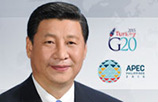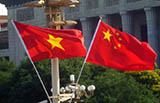Progress in Tibet, as Pelosi has seen, is just plain fact
By Chen Weihua in Washington (China Daily USA) Updated: 2015-11-16 06:28At least two mainstream US newspapers — the New York Times and Washington Post — have questioned Chinese news media reports that Nancy Pelosi, the House Minority Leader, praised the progress in the Tibet autonomous region on her first visit there last week.
The Tibet Daily reported last Thursday that Pelosi and her delegation met Chen Guoquan, Party secretary of the Tibet autonomous region, in Lhasa on Tuesday in a meeting attended by other local leaders, as well as monks and nuns from Tibetan temples.

Chen briefed US lawmakers on the social and economic development in Tibet, which marked the 50th anniversary of the founding of the autonomous region in early September.
The Tibet Daily quoted Pelosi as saying that Tibet is part of China's territory and she described the visits to temples, schools, communities and local residents' homes and the in-depth interactions as greatly helping their understanding of Tibet in a comprehensive way.
Pelosi, who went with six other US Democrat lawmakers, spoke highly of the great transformation in the new Tibet and the efforts by the Chinese government in guaranteeing freedom of religion and protecting ethnic traditions and culture, as well as the ecological environment.
"Thanks to the efforts by the Chinese government, the living standards of Chinese people, including Tibetan people, have improved significantly. People all over the world have recognized this, and you have every reason to feel proud of this," the Tibet Daily quoted Pelosi as saying.
Both the Times and the Post disputed the authenticity of Pelosi's quotes based on her past speeches on Tibet and China's human rights record.
However, it should not be surprising for anyone to change his or her views after a fact-finding trip, especially for the first time to a place as mysterious as Tibet.
Many Americans visiting Shanghai for the first time often marvel at the glitz and futuristic skyline in comparison with New York City.
In her meeting with Zhang Dejiang, chairman of the National People's Congress Standing Committee, Pelosi praised China’s great achievements in lifting its people out of poverty. That is simply an undeniable fact recognized and applauded by the whole world.
Many Western journalists still live under the mentality that anything good about China must be untrue, while anything bad about China, no matter how groundless, must be real. Such knee-jerk reaction is based on stereotypes and has prevented many from seeing the big picture in reporting the news.
So far, Pelosi and her office have not released any statement refuting the Tibet Daily report or commenting on the suspicions raised by the Times or Post.
It could be that Tibet Daily did not quote Pelosi's speech in its entirety, which is often the case for almost all news media, Chinese and Western alike.
But acknowledging the progress in China or the Tibet autonomous region is simply speaking the truth of the great transformation taking place there.
For a long while now, Western media have focused narrowly on negative reporting, especially in covering China, while the Chinese news media have traditionally emphasized the positive side of the picture. Ironically, combining the two can often help people see the whole picture.
It's true that China, as a developing country, still has a lot to improve on in almost every aspect — from social, economic and human rights to religious freedom and rule of law, things most Chinese are fully aware of. And it would be no surprise if Pelosi had concerns over certain issues.
But facts speak louder than words. For example, while only 26.8 percent of single-race American Indians and Alaska Natives, age 5 and older, spoke a language other than English at home in 2014, according to US Census, more than 90 percent of Tibetans speak their own language.
Tibet has seen its GDP growing at an annual average rate of 12.4 percent since 1994, registering double-digit growth for 20 years in a row. In the first eight months of this year, some 14.29 million Chinese and foreign tourists visited Tibet.
State-of-the-art infrastructure, such as highways, railways, airports and hospitals, have been built at a rapid pace in the last few years in Tibet thanks to support from the central government. During the 12th Five-Year Plan (2011-15), Tibet planned to invest 193.1 billion yuan ($31 billion) in 226 major social, economic, infrastructural and ecological projects — more than 70 percent of them funded by the central government.
The fact that Lhasa, capital of Tibet autonomous region, has been ranked the highest in the Happiness Index among Chinese cities for the fifth consecutive year in 2015 speaks some truth to the progress in Tibet.
These are some of a long list of facts about today's Tibet, and it would be wrong to ignore the progress and big picture.
Contact the writer at chenweihua@chinadailyusa.com






